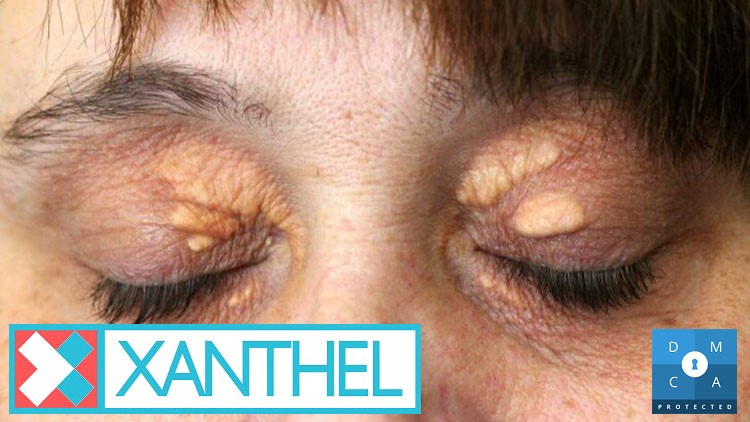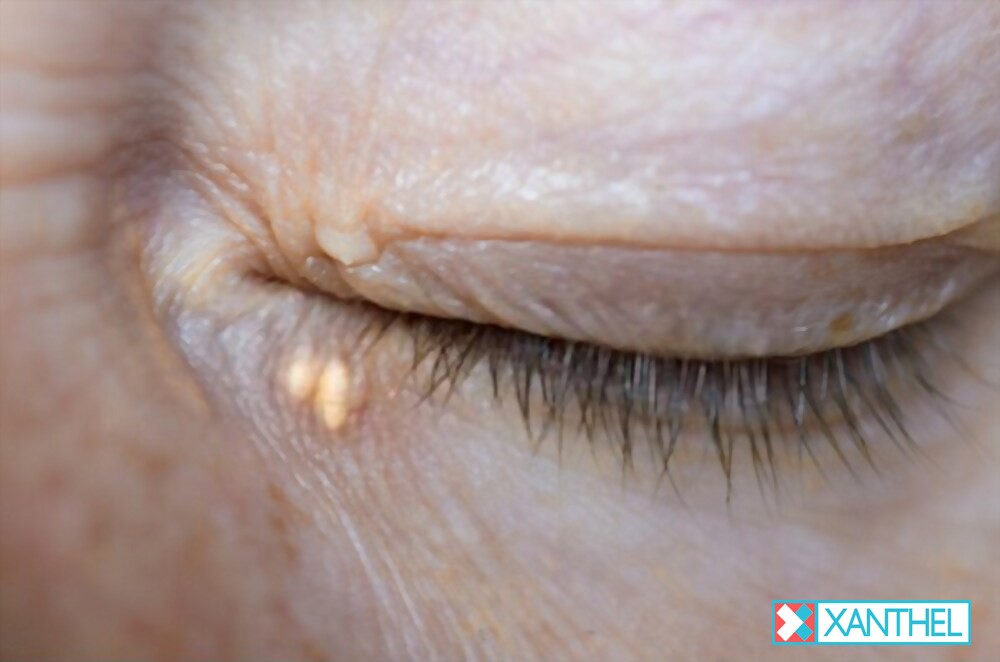What Xanthelasma Looks Like – A Visual Guide to Understanding Eyelid Plaques
What Xanthelasma Looks Like – A Visual Guide to Understanding Eyelid Plaques
It often begins as a private discovery, a moment caught in the mirror under the uncompromising brightness of the morning sun. You notice something unfamiliar, a small, yellowish patch of skin nestled near the inner corner of your eye. At first, your mind races for a simple explanation. Is it a trick of the light? A sign of fatigue? A stubborn bit of sleep that won’t wipe away? But as days turn into weeks, this little mark persists. It doesn’t itch, it doesn’t hurt, but it doesn’t leave. This is the quiet, unassuming arrival of xanthelasma.
The clinical term, xanthelasma palpebrarum, sounds far more serious than the condition itself. In reality, these plaques are benign. They are not cancerous, not contagious, and not physically painful. They are, quite simply, localized deposits of cholesterol that have gathered just beneath the skin’s surface. Yet, for a condition so harmless to one’s physical health, it can inflict a surprisingly heavy emotional toll. Our eyes are the epicenter of our expression, the windows through which we connect with the world. A visible, discolored mark in this profoundly personal area can feel like a constant spotlight, attracting unwanted attention and subtly eroding confidence with every glance. This guide is designed to move beyond a simple gallery of pictures, to paint a vivid mental image that helps you identify xanthelasma, understand its potential implications, and navigate the feelings it can provoke.

The Visual Signature: Describing the Appearance of Xanthelasma
To truly understand what xanthelasma looks like, you must discard any notion of a hard pimple or a scaly patch of dry skin. Instead, picture a tiny deposit of soft, melted butter or a fleck of pale beeswax, resting just below the delicate, nearly transparent skin of the eyelid. This analogy comes close to capturing the unique texture and appearance of these plaques. They are characteristically soft, with a texture that can be described as velvety, doughy, or semi-solid to the touch. Their surface is typically smooth and either completely flat or slightly raised, like a tiny, gentle hill on the landscape of your skin.
Their color is their most defining trait. It can range from a pale, creamy yellow to a deeper, more pronounced chamois or even a faint orange hue. This distinct coloration is what makes them so noticeable against the natural tone of the skin. The location is also a key identifier. Xanthelasma appears exclusively on the upper or lower eyelids and demonstrates a strong tendency for symmetry, frequently developing in the same spot on both the left and right eyes. The most common site by far is the inner corner of the eye, an area known as the medial canthus.

Xanthelasma does not appear fully formed overnight. Its development is almost always a slow, creeping process. A plaque may begin as a single, pinhead-sized yellow dot, so small it is easily overlooked. Over many months, or sometimes even years, it can gradually expand, growing wider and becoming more noticeable. In some cases, multiple small spots can emerge in close proximity and eventually merge together, forming a larger, more irregularly shaped patch. When these patches become extensive, they can take on a distinctive shape, sometimes described as resembling a small, soft butterfly wing resting on the eyelid. It is crucial to remember that no matter their size or shape, these plaques remain a superficial phenomenon. They do not invade the muscle or tissue beneath, nor do they interfere with your eyesight or the mechanical function of your eyelid. Their impact is purely cosmetic, but as anyone who has them will attest, that cosmetic impact can feel deeply significant.

More Than Skin Deep: The Connection to Your Inner Health
While a xanthelasma plaque is a surface-level skin issue, its presence can sometimes serve as a visible clue, a gentle tap on the shoulder from your body about your internal wellness. These plaques are made of lipids, which are fats, and their formation is frequently, though not always, linked to an imbalance of cholesterol and triglycerides in the bloodstream.
In fact, medical studies show that approximately half of all individuals who have xanthelasma also have elevated cholesterol levels, a condition known as dyslipidemia. When your body has an excess of certain types of cholesterol, it can begin to deposit these fats in various soft tissues, with the delicate skin of the eyelids being a common site. This is why the appearance of xanthelasma should be viewed as a catalyst for a conversation with your doctor. It provides a tangible reason to get a blood test and investigate for any underlying issues with blood lipids. Think of it not as a frightening alarm bell, but as a responsible and proactive checkpoint for your overall cardiovascular health.
However, it is just as important to understand that the other half of people with xanthelasma have perfectly normal cholesterol readings. For this group, the plaques may be related to a genetic predisposition, local factors within the skin tissue itself, or other metabolic quirks that are not fully understood. The key takeaway is not to jump to conclusions or assume the worst. The presence of xanthelasma is not a definitive diagnosis of heart disease, but it is a compelling and valuable reason to gain a clearer picture of your internal health from a medical professional.

Differentiating from the Lookalikes: Xanthelasma vs. Other Bumps
The skin around the eyes is a delicate area where several types of small bumps and spots can appear, so it is helpful to know what makes xanthelasma unique. While a dermatologist can provide a definitive diagnosis, understanding the differences can help ease your mind. For example, there are a few other common benign growths on the face that are sometimes confused with xanthelasma.
Milia are one common lookalike. These are tiny, hard, pearl-like white cysts filled with keratin, a protein. The key difference is texture and color, milia are hard and white, while xanthelasma is soft and yellow. Syringomas are another possibility. These are harmless growths of the sweat ducts and typically present as multiple, smaller, firmer bumps that are either skin-colored or slightly yellowish. They tend to be more numerous and less soft than xanthelasma plaques. Lastly, a condition called sebaceous hyperplasia involves enlarged oil glands that form small, soft, yellowish bumps. The telltale difference here is that these bumps often have a tiny central indentation or pit, a feature that xanthelasma lacks. The singular combination of a soft, velvety texture, a buttery yellow color, and its specific location on the eyelid is the unmistakable visual profile of xanthelasma.

The Emotional Weight of a Visible Change
We communicate more with our eyes than with our words. We convey joy, empathy, sadness, and trust through a simple gaze. When a persistent, discolored plaque plants itself right beside this hub of human expression, the psychological impact can be profound. It can begin as a quiet hum of self-consciousness, a nagging awareness of the mark every time you catch your reflection. Over time, this can escalate into a more pronounced social anxiety.
Have you found yourself wondering if new acquaintances are staring at your eyelid instead of looking you in the eye? Do you worry that people might make incorrect assumptions about your health or your age? This experience is incredibly common. The feeling of being exposed, of carrying a “flaw” that is impossible to conceal, can make face to face interactions feel tense. It can lead to subtle behavioral shifts, like angling your face in photos, applying concealer more diligently, or even avoiding direct eye contact. This emotional burden is just as valid as any physical symptom and is often the primary driver for seeking a cosmetic solution to restore not just the skin’s clear appearance, but also a feeling of inner peace and confidence. Learning about the different cosmetic approaches to managing xanthelasma is often the next logical step in this journey.

Your Clear Path Forward with Xanthel ® Gel
While understanding your internal health is a vital first step, we recognize that the visual and emotional weight of xanthelasma plaques is your most pressing concern. You want to look in the mirror and see your own clear skin looking back at you. You want to engage with the world confidently, free from the quiet distraction of a mark on your eyelid.
This is why Xanthel ® Gel was created. It offers a sophisticated, targeted, and non-invasive cosmetic solution designed specifically to address the appearance of xanthelasma. Our selectively formulated gel works to visibly diminish the yellowish plaques, helping to restore the natural, even-toned appearance of your skin. Many of our clients see a remarkable cosmetic improvement after just a single, simple application from the comfort and privacy of their own home.
Developed to be effective on all skin tones, Xanthel ® Gel provides a professional-grade approach you can trust. Forget expensive consultations and long recovery periods. We offer a straightforward path to reclaiming your confidence with a product that is both discreet and powerful. With free worldwide delivery, the solution to the cosmetic appearance of your xanthelasma is closer than you think. Choose Xanthel ® Gel and take the definitive step toward clear, confident skin.

Xanthel ® Cosmetic Gel
A focused cosmetic gel formulated specifically to improve the appearance of eyelids bearing xanthelasma plaques. Its composition is selectively designed for cosmetic impact across all skin tones, offering a straightforward, at-home option for managing the look of these blemishes.
A Singular Application
The power of Xanthel ® is in its simplicity. It is formulated for a single, one-time cosmetic application. This focused approach is designed to visibly diminish the appearance of xanthelasma plaques, removing the need for daily or repeat uses.
Legal: This product is for cosmetic use only. This product is not intended to diagnose, treat, cure, or prevent any medical condition. Consult a healthcare professional regarding any skin condition.